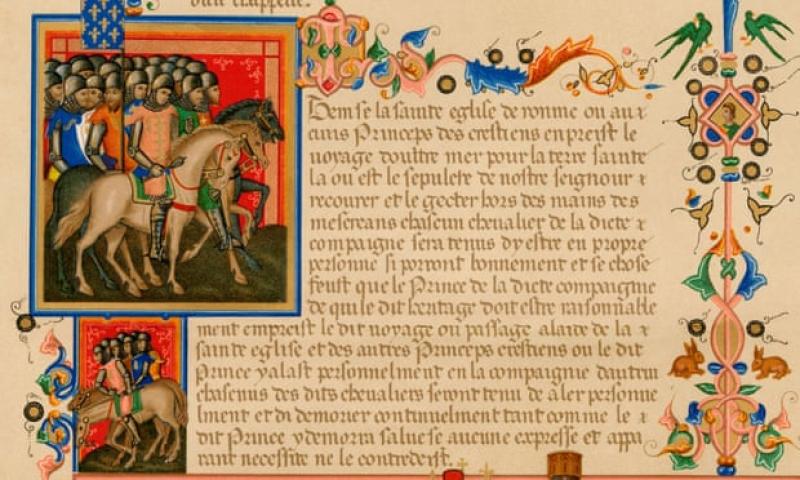Medieval warhorses no bigger than modern-day ponies, study finds
By: Steven Morris (The Guardian)


Shades of Monty Python with knights on tiny horses.

In films and literature they are usually depicted as hulking, foot-stomping, snorting beasts but a new study has claimed that the medieval warhorse was typically a much slighter, daintier animal.
A team of archaeologists and historians searching for the truth about the steeds that carried knights into battle has concluded that most were probably only the size of a modern-day pony.
The researchers examined the bones of about 2,000 horses dating from the fourth to 17th centuries found at castles, a medieval horse cemetery and other archaeological sites in England, as well as combing historical records and fictional stories of chivalry.
"It turns out that things are not quite as they have usually been portrayed," said Prof Alan Outram, of the University of Exeter's archaeology department. "In popular culture, warhorses are often depicted as the size of a shire horse. It really wasn't like that. Most medieval horses are surprisingly small. There are very few that are the sort of size portrayed in film or even in exhibitions."
Outram said the vast majority of medieval horses, including ones believed to have been used in war, were less than 14.2 hands (4ft 10in) high, the maximum height of a modern pony.
One of the biggest they found was a horse from the Norman period, the remains of which were discovered in the grounds of Trowbridge castle in Wiltshire, but it was only 15 hands - the size of a small modern light riding horse.
Outram said that size clearly wasn't the be-all and end-all for medieval warriors. He said that there might well have been some particularly large warhorses but armies would also have needed smaller horses for tasks such as harrying a retreating enemy, carrying out long-range raids and transporting equipment.
The research team was keen to spell out they did not mean to imply that medieval horse breeders did not put huge amounts of time, effort and money into their work. "In the 13th and 14th century especially the royal stud was an amazing network," said Outram. "They were spending much more money on horses than people."
There is still much work to do. The remains of very few, if any, horses have been found on battlefields so working out which animal was a warhorse rather than, say, a farm horse, is difficult. They are also hampered by the fact that most fallen warhorses were hauled off to the knacker's yard rather than afforded an organised burial.
The next steps include analysing findings at a site in Westminster, more study of horse armour and examining the DNA of bones to find out more about one of history's most iconic creatures.

Tags
Who is online
425 visitors


The ponies I've encountered were mean little buggers. So, it's not too difficult to think of them as warhorses.
Shetland ponies are damned mean. Welsh ponies, not so much.
My older sister owned two Shetland ponies back in the 80's and 90's and those were two of the meanest and oneriest critters you could imagine. I got bucked off of them on more than one occasion for no apparent reason!
I don't think I've ever met a Welsh pony. Shetlands were popular when I was a kid and every Shetland pony I met had an attitude.
Not sure why Welsh ponies aren't more well known.
I remember watching a movie about a horse that was trapped in the middle of a battlefield in some barbed wire.
Both sides had a cease fire and tried to rescue the horse.
I can't remember what the movie was called.
4'10 is tiny.
People were smaller then too. There's no way most people would ever fit into Henry VIII's armor. It looks like he was about 5'4" tall.
I thought I read Napoleon was small too. Something like 5'2.
If you go by the movies and pictures, you would think they were riding Belgians. Interesting article.